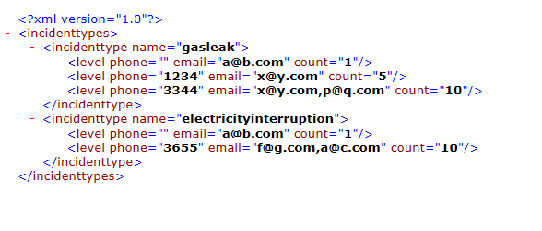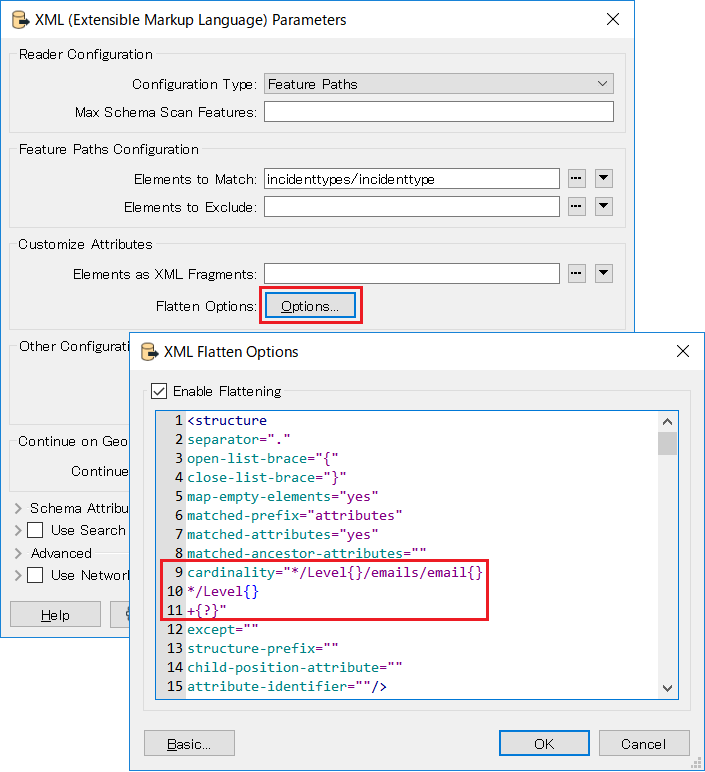@takashi
Hi I am using an SQLCreator to return all incidents reported in the last hour. I then want to use an XML file to define levels for each alarmtype, which determine whether an alert record is created depending on the type of incident and count e.g.
<incidentype name="gasleak" level="1,5,10"/>
<incidenttype name="electricityinterruption" level="1,3,10"/>
therefore for gasleak, an alarm record is created if count of incidents is as follows:
count alarmcreated Level AlarmTime
2 Yes 1
4 No N/A
7 Yes 5
11 Yes 10
Note when count=4, no alarm is created as level 1 alarm has already been created.
So far, I have added an XML reader and use FeaturePaths. I have also obtained the count of incidents for the last hour using SQLCreator.
Any suggestion how FeaturePaths could be used in this case? Is pythonXML the best way forward?








